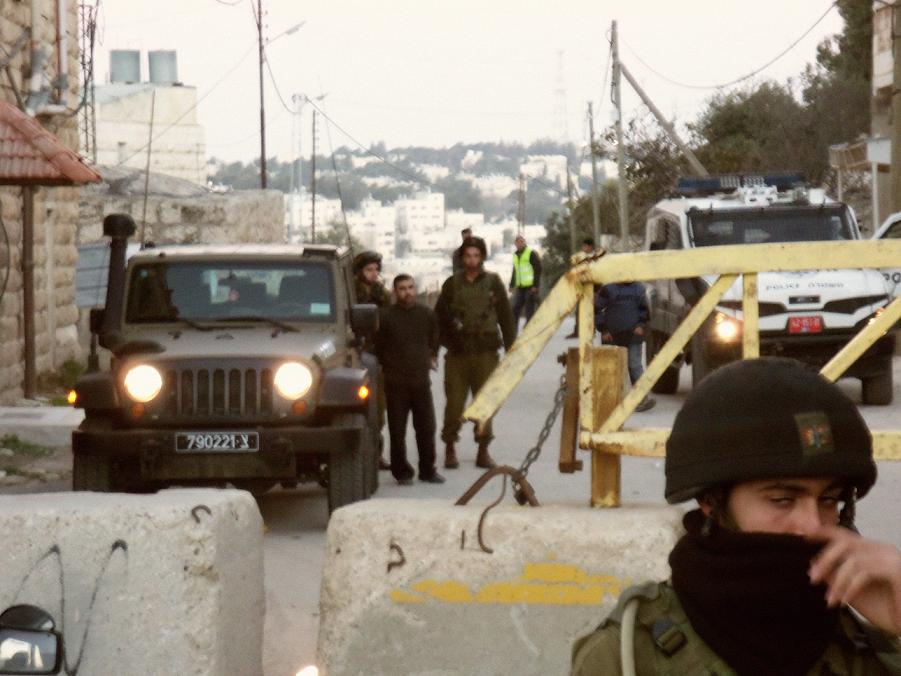Tag: Tel Rumeida
-
14 year old boy detained in Hebron
by Team Khalil 7 February 2013 | International Solidarity Movement, Hebron, Occupied Palestine A 14 year old boy was detained at checkpoint 56 in Tel Rumeida, Hebron. At 2 pm on 6th February Amir Ibrahim Shawar was taken by soldiers of the Israeli occupation forces near the Jewish cemetery in Tel Rumeida, Hebron. He was…
-
Israeli military conducts illegal operations in Tel Rumeida, Hebron
by Wyatt Black 31 December 2012 | International Solidarity Movement, West Bank The Israeli occupation forces have shown a large amount of aggression recently in the Tel Rumeida neighborhood of Al Khalil (Hebron). Three Palestinian homes near the ancient Jewish cemetery were entered and searched on the 30 December. Another apartment rented by internationals had…
-
Homes searched during Israeli incursion in H1 Hebron
by Team Khalil 16 December 2012 | International Solidarity Movement, West Bank One Palestinian was arrested and many were harassed by Israeli soldiers on Sunday evening between 6pm and 7:30 pm during an incursion into the Palestinian Authority controlled area of Hebron. Israeli occupation forces entered the Tel Rumeida area in H1. Homes and shops…

